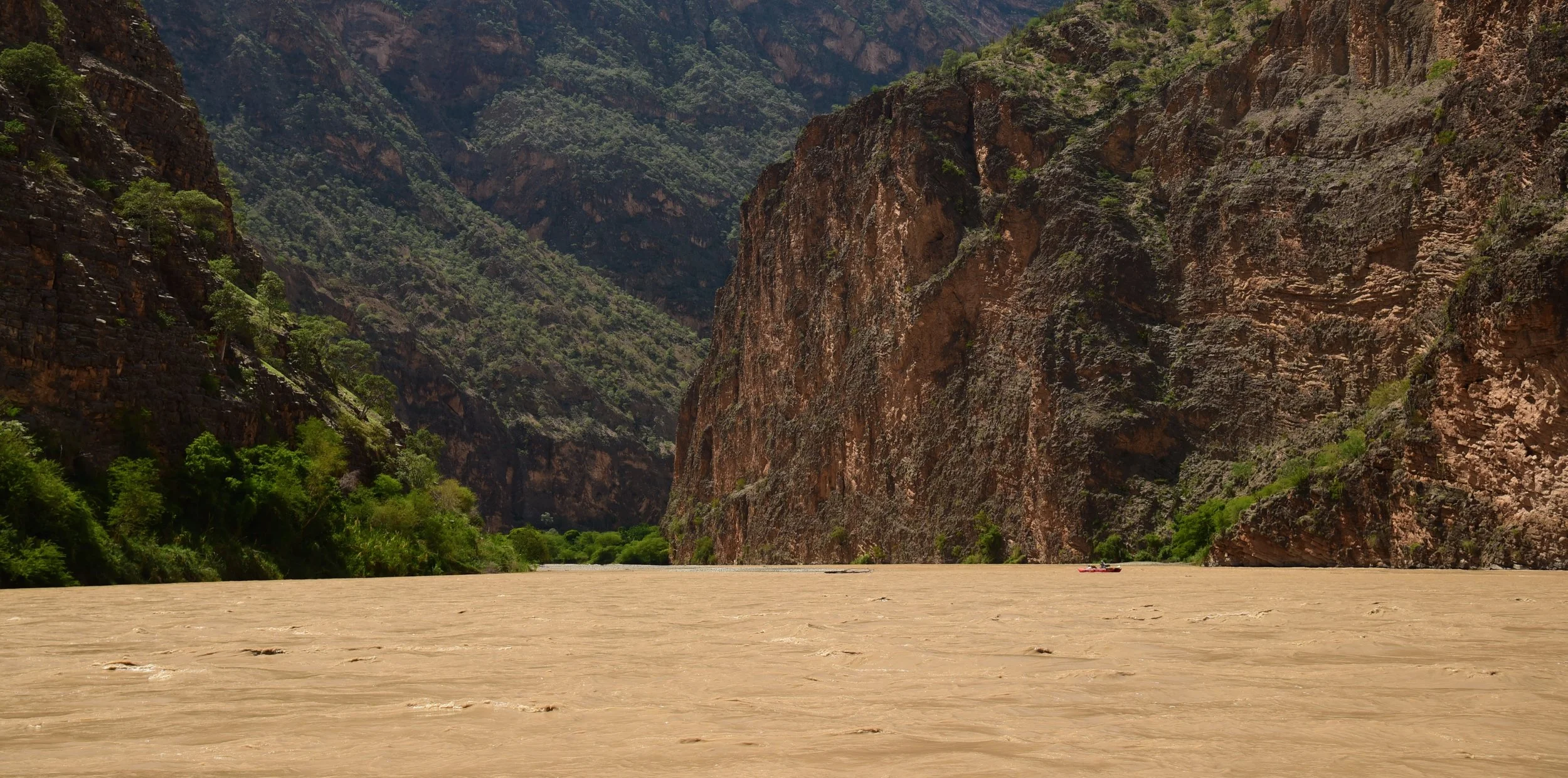Fear and Boating on the Rio Marañon (Part 2)
Dulce De Leche
We chewed coca leaves and listened to latin club music for hours on end as the small van wound its way through hairpin turn after hairpin turn, gaining thousands of feet of elevation in a matter of only a few miles, as the crow flies. The driver honked his way around every corner of the single lane road to let oncoming traffic on the other side of the endless blind corners known that we were careening around the other side. All of this while we sped along guardrail-less stretches of vertical cliffs and multiple washouts. We used this time to get to known each other as I only knew two other folks who had signed up for the trip, Jake and Bevin, whom I'd met while working as a guide in Alaska. Then there was my fiance, Laura, whose only other river experience had been the aforementioned Cataract Canyon trip and a harrowing afternoon where I talked her into paddling class III rapids in an inflatable kayak on the second day met. The other six guests were also guides, from Oregon and Idaho, though a few had graduated from their guiding days to pursue less hard scrabble careers. One an engineer for Black Diamond in Salt Lake, another an employee of a camp stove brand and last but not least a "mostly" trained doctor studying at Duke University. There's still time for them to come back to guiding, there is always hope.
The road we traveled is visible in the background, next to one of the small towns which find enough flat space to make their homes.
We dropped nine thousand feet from the headache inducing pass through the Andes mountains on the second day, giving us our first glimpse of the floodstage torrent of the Rio Marañon. The water resembled a South American dessert food known as Dulce de Leche, or caramelized condensed milk, which is to say an opaque brown. It carried so much sediment out of its high mountainous home that standing next to the river one could hear an audible hissing like that of a rapidly deflating raft tube. We snapped photos from the van as it wound down the dirt road toward the river, passing at one point a Toyota Hi-Lux, the ubiquitous 4x4 of this region, which had misjudged a turn and tumbled off the road a few hundred feet before lodging itself against a stout cactus. A reminder that our lives were truly at the mercy of the man behind the wheel, who seemed like a pretty good guy.
Our first glimpse of the river. Even from high up on the road, we could tell that it was high and fast.
Crossing over the river on a low slung bridge to the put in on the other side, I wondered if we would fit beneath the concrete and steel; the river looked high enough to force us to duck under it. When we found our guides, Pedro and his right hand man Ariel, they were hard at work repairing one tube of the cataraft (as the name would suggest, a catamaran style raft with only two independent tubes shaped like giant bananas which sit beneath a metal frame strung across with a net for gear) which would be captained by a single rollover guest from the ill-fated upstream trip, Chloe. She chose not to continue on with the rest of the Appalachian State University group and somehow talked herself onto our expedition.
The four of us rowing boats eagerly pawed through the unkempt bucket of cam straps to begin rigging our respective rafts. Only one held air in all of its tubes. One was peeling apart at the seams like a tourist in Huanchaco who had forgotten sunscreen and baked himself red in the unforgiving equatorial sun. Jake's boat had only a handful of reliable D-rings, the hard points in which all things which much stay connected to the raft must be either clipped or tied into, as a disturbing number of them were hanging on by less than a thread. With only a miserably leaking floor and two slowly leaking front tubes to worry about, my raft was second best in the fleet. A raft is made of four independent tubes which are glued together so that if you pop one, the whole thing doesn't lose air and sink. Only having two reliable tubes on my raft meant it was good to go, though a deflated floor can be rather dangerous as water collects in the bottom and acts as an anchor, or worse. I spent a good portion of that first day taking apart the valve on my floor and tinkering with it, while Jake tried his best to use a bare minimum of D-rings and Matt looked forlornly at his absolutely pitiful boat which had the worst de-lamination problem out of all. Only one boat out of the five inflatables was truly river worthy and that belonged to Aaron. He called dibs, so, he got it.
Seth, who inherited a river company from his parents in Idaho and grew up doing multi-day trips since he was a kid, confided to me that he picked through the repair kit when Pedro and Ariel were finished with the cataraft, he said that there was barely any glue left after the three enormous patches that they performed just to get it to hold air. That night we had our dinner at a little restaurant in town and fell asleep in our tents eagerly anticipating the thrilling adventure to come.





